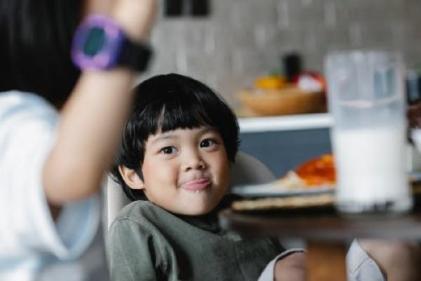Fleas prefer the warm skin under animal fur and hair, as opposed to living on humans. Fleas will often jump on to an animal when it is walking outside, especially in sandy or grassy areas. The fleas then lay their eggs on the animal hair. These smooth eggs fall off easily and end up in carpets, on bedding and on furniture. When the eggs hatch, the fleas will seek out animals to live on, but can bite people on the way.
Fleas are unlikely to lay eggs on children, but will bite them repeatedly if they can successfully hide in clothing that is worn often, like a jersey or jacket, or in sheets or blankets. Children will be more prone to having fleas jump onto them, because their bodies are nearer to the ground and they are more affectionate than most adults are with family pets. It is possible for a baby to inadvertently swallow a jumping flea. This can cause problems with tape worms, if the flea happens to be carrying a tapeworm egg.
If you have pets, then carpets should be vacuumed often and the vacuum cleaner emptied out immediately to prevent eggs hatching inside the bag and fleas crawling out. Take care of pets and use flea collars, or have them dipped regularly to prevent flea infestations from occurring.
Fleas are unlikely to lay eggs on children, but will bite them repeatedly if they can successfully hide in clothing that is worn often, like a jersey or jacket, or in sheets or blankets. Children will be more prone to having fleas jump onto them, because their bodies are nearer to the ground and they are more affectionate than most adults are with family pets. It is possible for a baby to inadvertently swallow a jumping flea. This can cause problems with tape worms, if the flea happens to be carrying a tapeworm egg.
If you have pets, then carpets should be vacuumed often and the vacuum cleaner emptied out immediately to prevent eggs hatching inside the bag and fleas crawling out. Take care of pets and use flea collars, or have them dipped regularly to prevent flea infestations from occurring.



